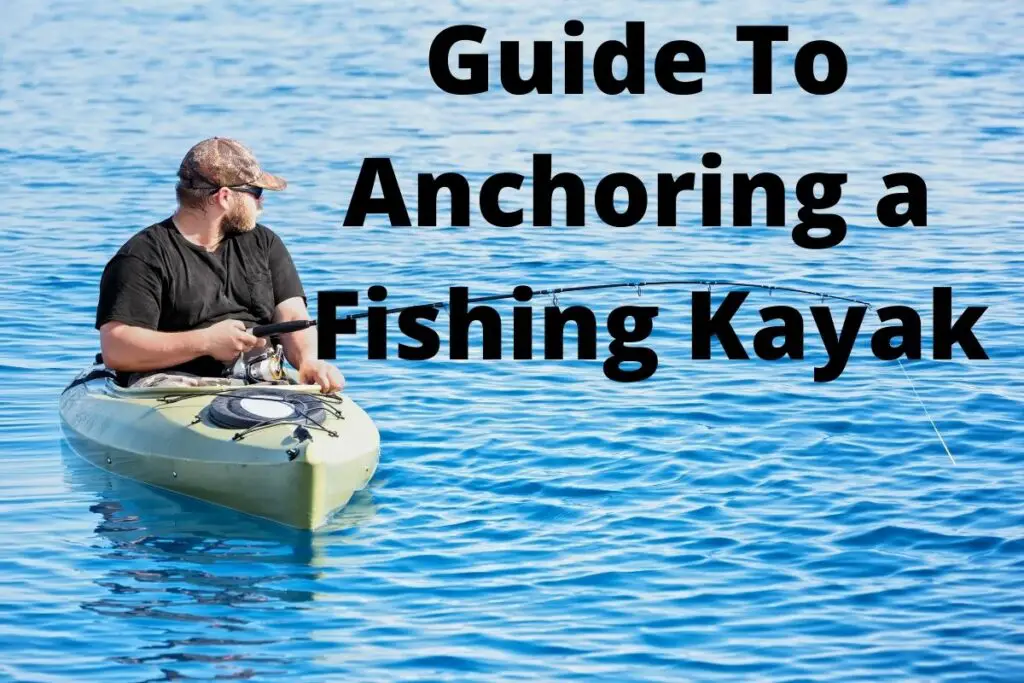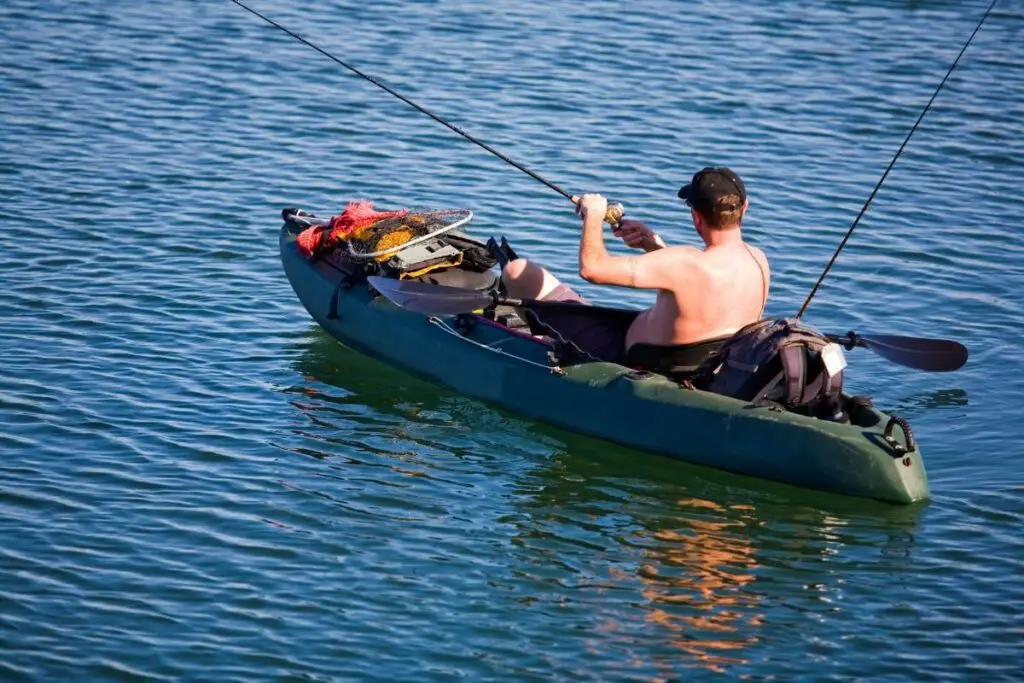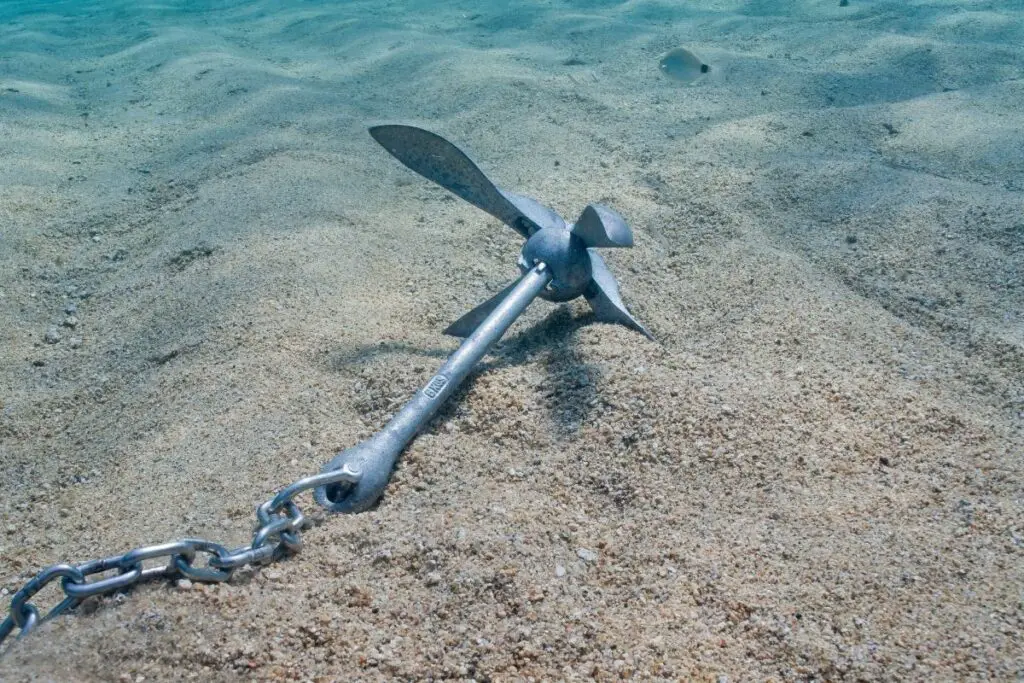
From as early in history as humanly recorded, fishing has been a part of life for many communities across the globe.
Prehistorically, the activity was done to secure food for survival.
During the 18th century, it became a popular recreational activity for the elite and wealthy.
However, as technology evolved, allowing for mass production of fishing equipment, it became more accessible to the regular folk.
It also makes a great sport for angling enthusiasts, and there are various competitions held annually.
Table of Contents
3 Suitable Kayak Anchors
| Image | Title | Buy |
|---|---|---|
 | Gradient Fitness Marine Anchor, 3.5 lb Folding Anchor, Grapnel Anchor Kit for Kayaks, Canoes, (SUP) Paddle Boards, (Green, 3.5 lbs) | See Price on Amazon |
 | Best Marine Kayak Anchor with 40ft Rope. Premium 3.5lb Folding Anchor Accessories for Fishing Kayaks, Canoe, Jet Ski, SUP Paddle Board and Small Boats. Grapnel Anchors Trolley Kit Accessory | See Price on Amazon |
 | Extreme Max 3006.6548 BoatTector Complete Grapnel Anchor Kit for Small Boats, Kayaks, PWC, Jet Ski, Paddle Boards, etc. -3.5 lbs | See Price on Amazon |
What Is A Fishing Kayak?
Did you know that a recreational kayak is different from a fishing kayak? While the differences seem subtle, a closer look will reveal that their intended purposes are different.
For starters, leisure kayaks are long and narrow, while those designed for anglers are short and wide.
The fishing kayak also comes with extra room to cater to your fishing equipment.
Fishing kayaks are almost always designed with the sit-on-top design, while leisure kayaks have the sit-inside design.
The reason behind the sit-on-top design for angling kayaks is that it provides more space and flexibility for you to stretch and rest your legs.
This feature comes in handy as you tend to spend hours stationary in a single spot.
On your fishing expedition, the last thing you want to worry about is your vessel tipping over.
The fishing kayak is designed with a wider hull, giving more stability to the vessel.
An angler’s kayak is usually of a lightweight material for various practical reasons.
Firstly, in your fishing expeditions, you are likely to travel to different water bodies.
It, therefore, makes sense that your vessel is of a weight that allows for flexible transportation to the different fishing locations.

Secondly, your fishing equipment will have a considerable weight, along with your potential catch.
With all that extra cargo on board, a lightweight kayak ensures stability on the water.
Your fishing equipment is a prized possession that probably took quite a chunk of money to invest in.
Naturally, you will want to take good care of it to preserve your investment.
A fishing kayak has the added advantage of hatches or sealed bulkheads to protect your equipment from water damage.
The Importance Of Anchoring
On any fishing trip, your goal is to catch some fish. Your motivation might be determined by size or quantity.
Your decision on whether to anchor or not will directly affect the quality or quantity of your catch.
An anchor is a device, usually metal, attached to a boat or ship by a chain and is lowered into the water to land on the seabed and keep the vessel in place.
Let’s take into account the weather. On a windy day, your kayak may be tossed and turned on the water, leaving you with little or no fish caught.
Anchoring your kayak will give you the stability you need to steadily make your catch.
Even on a calm day, setting up your jigs, live-bait rigs, or whatever catching apparatus you have will be so much easier if your kayak is anchored.
Anchoring also allows you to target your efforts on a specific spot without actually disturbing the school of fish.
If your boat floats above the school, the fish will be scared away, thus affecting your catch.
However, with your kayak properly anchored at a good distance, you can cast your nets and make your catch without alerting the fish.
As an avid angler, you understand that specific locations are known to harbor different types of fish.
Areas with wooded cover, rocks, or weeds are prime fishing spots.
By choosing to put down your anchor and patiently fish out your catch, you are guaranteed a productive day on the waters.
Anchoring 101
You would think anchoring a kayak is a simple task that requires little thought or effort, right? Wrong!
If not done properly, anchoring your kayak could end up more catastrophic than you imagined.
Your boat could capsize from incorrect anchoring, and if you cannot swim back to your vessel, a rescue party would have to be called in.
The challenges of anchoring your kayak are largely dependent on the prevailing weather conditions.
Anchoring at a fast tide or strong wind will prove more challenging than that on calm waters.
Let’s explore the correct anchoring techniques to give you a successful fishing trip:
- Make sure you have the proper anchor for your kayak. Your ultimate goal is to secure your boat with the least amount of weight. As space and stability are important factors for your kayak, choose an anchor that will not consume too much space or unnecessarily weigh your boat down.
For a lighter kayak in calm waters, a 3-pound anchor should suffice. If you use a heavier kayak in deep waters, your anchor should weigh between 5 and 7 pounds.
- Add a length of galvanized chain above your anchor to improve the holding power of your anchor. This chain will add weight to your anchor and buffers the movement of the kayak against the anchor. The chain should be between 3 and 6 feet long. Also, install an anti-snag mechanism on your anchor for extra safety.
- Take into consideration the seabed depth and type for your fishing trip. A popular anchor amongst anglers on sandy or soft-bottomed water bodies is the grapnel anchor with foldable prongs.
A stakeout pole is also useful for fishing in shallow sandy or muddy waters. If you want to make sudden stops, a powered anchor system is your best bet. For rocky bottoms, a drag chain will be the ideal anchoring solution.
- Choose your anchoring location wisely. Ideally, you want your boat settled in an area that is not windy, has calm currents, and is not in the eye of traffic. This will keep your boat steady and increase your chances of a good catch.
- Calculate how much anchor line you will need. Generally, you will need 7 feet of anchor line for every foot of water you are in. It’s always better to have too much line than too little.
- Secure your anchor line onto your bow cleat right at the point you want your boat to stop.
- Move the bow towards the direction of the wind or current to bring it directly into the wind. This ensures the stability of your boat when anchored.
- When your kayak has stopped, slowly lower the anchor into the water. Do not throw it into the water, as this may entangle the anchor.
- Let out the anchor line and reverse your boat to help set the anchor.
- When your anchor is firmly set, use landmark reference points to ensure your kayak is not drifting. Regularly check these points.

Safety Tips To Remember
Practice makes perfect. If anchoring is still novel to you, give it some trial runs in calm, shallow waters before casting into the deep.
By all means, avoid anchoring with the anchor at mid-ship. If you anchor at midship, you increase the risk of capsizing.
The likelihood of your kayak tipping over with this kind of anchoring is unlikely in calm waters but will increase in windy, tidal, or heavy current conditions.
Ensure that you always carry a safety knife or line cutter should anything go amiss while anchoring your vessel.
So, go ahead and enjoy your fishing expedition, equipped with the necessary skills to successfully anchor your kayak.
You may be pleasantly surprised by just how fruitful your angling will be.


